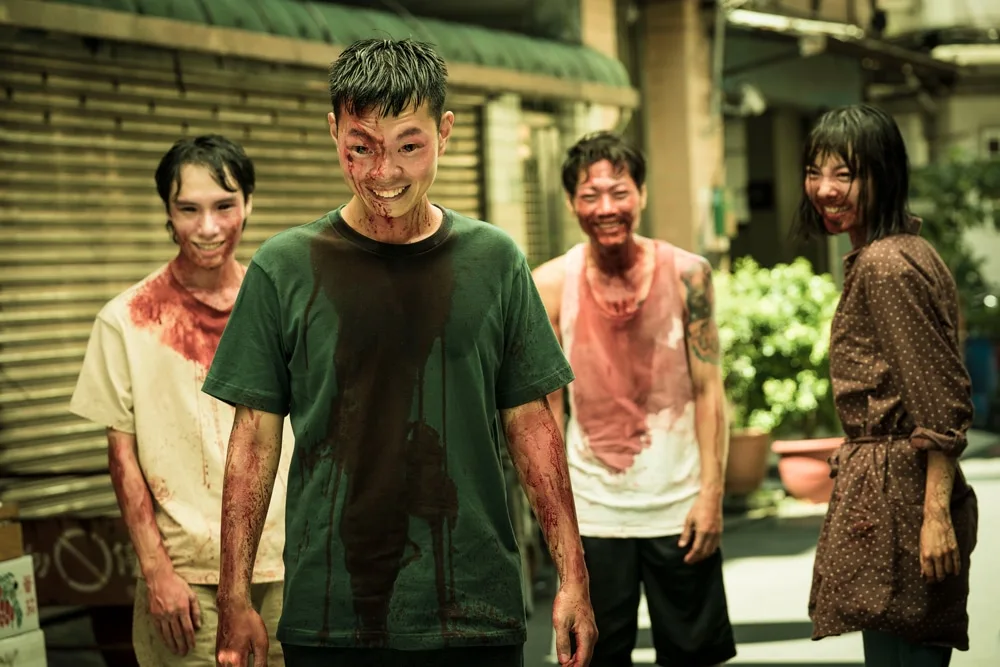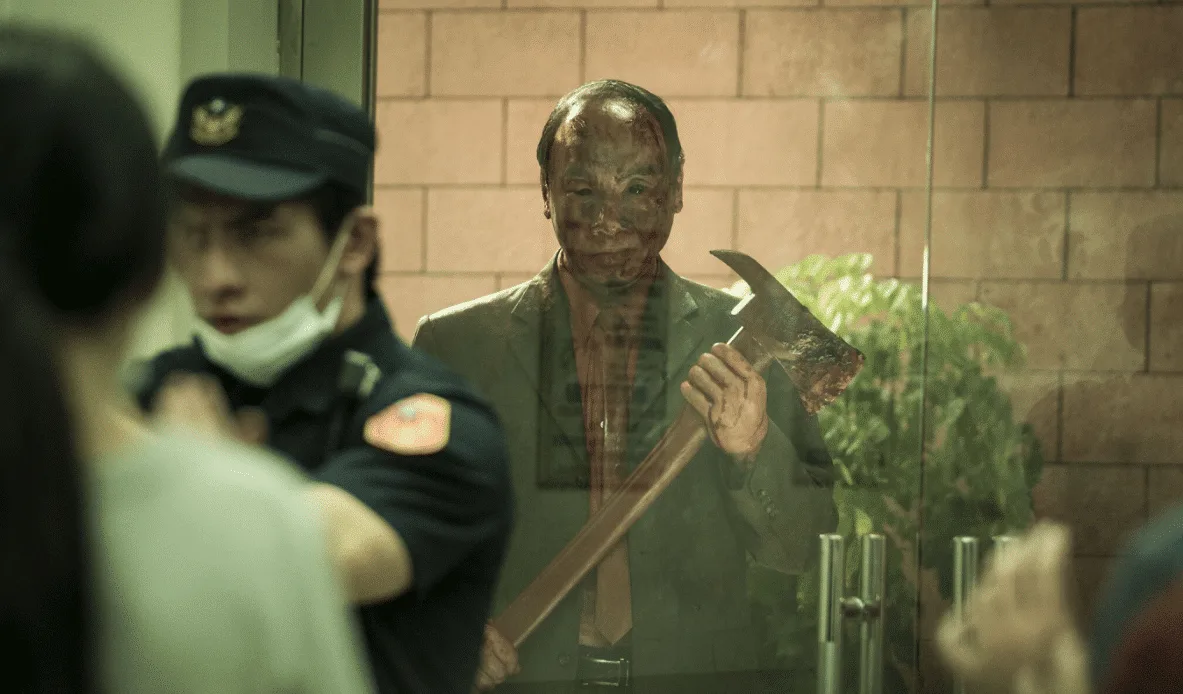
There has inevitably been a surge in ‘lockdown horrors’ over the past couple of years. It’s a fairly broad church, with some of these films simply being made under lockdown conditions, whilst others directly address the threat of novel viruses – but nearly every one of these films has directly or indirectly addressed the things we’re perhaps now newly aware that we fear: isolation, othering, illness, loss. The Sadness (2021) covers the lot, and is without a doubt the best of these so far: it’s a disturbing, relentless and unflinching film, a knowing entrant to the zombie horror genre in many ways, but knowingly crossing into other genres, too, whilst never offering any respite from what unfolds.
Modern Taiwan is ‘learning to live’ with a new virus called the Alvin virus, which causes flu-like symptoms; some commentators are alarmed at this laissez-faire approach, believing that the virus’s proximity to rabies (yeah, just go with this bit) means that it still poses a significant threat. Others see the whole thing as a hoax; it’s an election year, after all, and what better way to whip up fear in the masses? In the midst of all this, and quietly living their lives, is young couple Jim and Kat (Berant Zhu and Regina Lei) – and let’s be honest, it’d be no manner of film at all if the anxieties over the virus didn’t turn out to be very well-founded. However, as it turns out, the virus acts in an interesting way. Jim and Kat separate for work that morning as usual, right before this sudden shift in events becomes apparent: they then need to find each other against this chaotic backdrop. Yes, it’s a familiar plot point, but like everything else in this film, the journey is quite something. Happily, Jim and Kat are a sweet couple with all of the usual petty grievances and quirks which help to render them plausible, and they work effectively as key characters, each with their own traumatic character arc. Oh man, these are traumatic character arcs.
To the virus itself. Rather than turning the infected into fully mindless zombies, or indeed killing them outright, it instead gives people permission to be the worst versions of themselves; think Freud and his ‘weak superego’ idea, only run wild. People are becoming gleefully violent, unhinged – but importantly, still rational – monsters. Ever wanted to crush the head of the guy in the queue in front of you? The virus makes it all oh-so possible, or even impossible for you not to indulge those feelings. And, of course, it doesn’t take many people to begin shunning the rules of normal life before those rules cease to matter much. The film doesn’t present a society already under siege, mid-way through a crisis – as many of the Romero zombie films do – and nor does it quite explode into action the way that, say, World War Z does; instead, it shows the uneven, and startling ways in which society can be upended by people who have, as a result of the virus in this case, dispensed with social order. To come back to Romero, the on-paper similarities to The Crazies are clear – love for his films is writ large here in several scenes – but The Sadness blends its Crazies-esque plot points with what looks like a nod to the ultraviolence of the Noughties, all blue-filtered torture and a camera which stays unwaveringly on scenes of incredible cruelty.
Along the way, the film looks superb: shots are composed carefully, make-up effects more than match up to the virus carriers’ grotesque, joyous curiosity about what can be done to the human body, and the pace of the film does just enough to render everyone here an unknown quantity; you’re often not quite certain if the person filling the frame is, in fact, infected, or otherwise unhinged. The ‘what are you reading?’ man on the train is one of the film’s most successful sequences for me, an eminently recognisable scenario which plays out in part in every city in the world on a daily basis. The man’s anger and frustration when Kat asks politely to be allowed to read quietly is in itself creepy and alarming; let’s remember that he escalates this situation when there’s nothing at the time wrong with him. And, though the virus divides Taiwan suddenly and sharply into ‘us and them’, it’s also clear that some people are apparently always on the verge of perpetrating horrors against one another, and that the virus simply grants permission for that.
It’s hard not to think of the current situation, in Ukraine of course, but also in other places perhaps less fully reported in the West, where people apparently behave appallingly as soon as they feel like they can. It’s a deeply unsettling aspect of humanity: to what extent are our consciences simply mandated? Ditto, people’s understandable – but still often unpalatable – desire to look away, remain uninvolved, is put under scrutiny here too. The only sequence which jars against the tone of the rest of the film is a certain political nod-and-a-wink; everything else makes for a deeply unsettling, thought-provoking horror, a story taken to extremes in the way only horror can. The Sadness has real gravitas and clout, it’s slick with blood, and it’s a worthwhile, reinvigorating addition to the genre. Grimly subversive stuff.
The Sadness is available on May 12th 2022 from Shudder.
